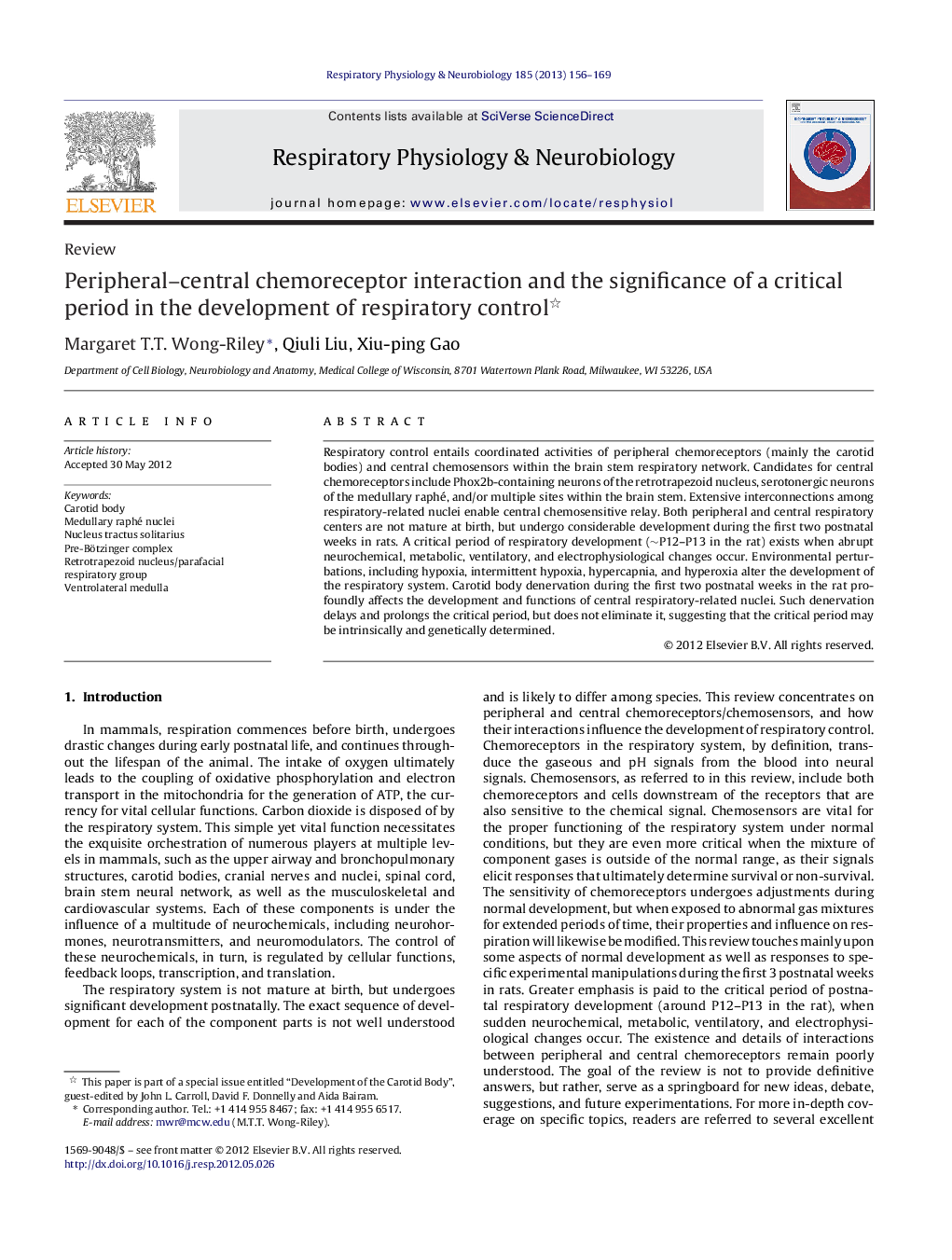| کد مقاله | کد نشریه | سال انتشار | مقاله انگلیسی | نسخه تمام متن |
|---|---|---|---|---|
| 2847328 | 1167349 | 2013 | 14 صفحه PDF | دانلود رایگان |

Respiratory control entails coordinated activities of peripheral chemoreceptors (mainly the carotid bodies) and central chemosensors within the brain stem respiratory network. Candidates for central chemoreceptors include Phox2b-containing neurons of the retrotrapezoid nucleus, serotonergic neurons of the medullary raphé, and/or multiple sites within the brain stem. Extensive interconnections among respiratory-related nuclei enable central chemosensitive relay. Both peripheral and central respiratory centers are not mature at birth, but undergo considerable development during the first two postnatal weeks in rats. A critical period of respiratory development (∼P12–P13 in the rat) exists when abrupt neurochemical, metabolic, ventilatory, and electrophysiological changes occur. Environmental perturbations, including hypoxia, intermittent hypoxia, hypercapnia, and hyperoxia alter the development of the respiratory system. Carotid body denervation during the first two postnatal weeks in the rat profoundly affects the development and functions of central respiratory-related nuclei. Such denervation delays and prolongs the critical period, but does not eliminate it, suggesting that the critical period may be intrinsically and genetically determined.
Journal: Respiratory Physiology & Neurobiology - Volume 185, Issue 1, 1 January 2013, Pages 156–169